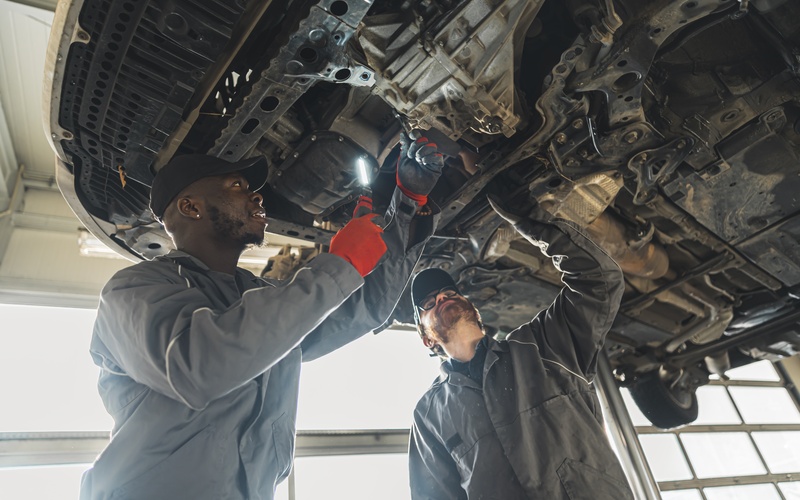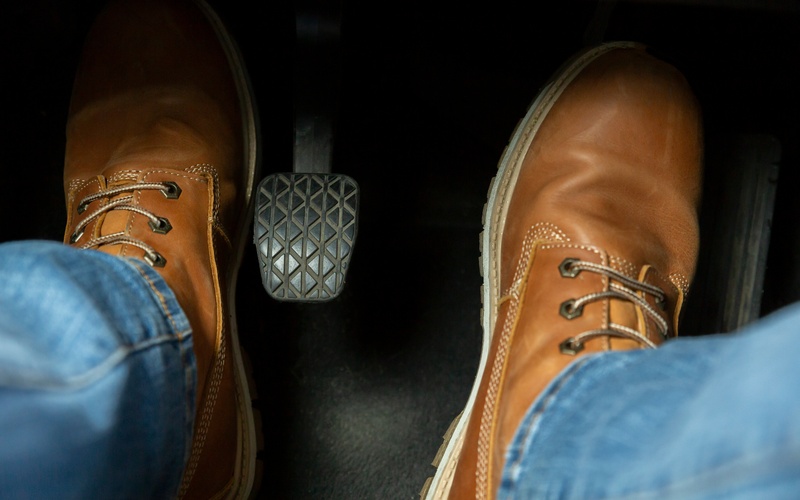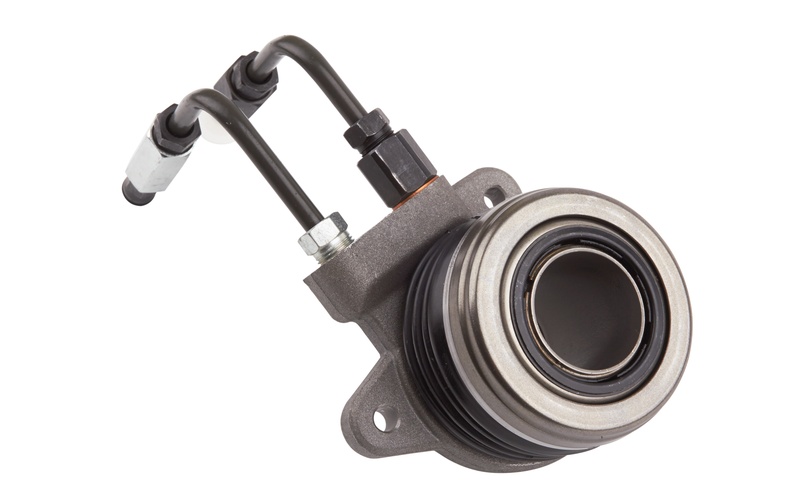What Are the Signs Your Hydraulic Clutch Needs Attention?

Many modern vehicles with manual transmissions are hydraulic systems instead of mechanical. Hydraulic clutch systems, especially for performance or racing models, offer smoother and more efficient operation than traditional mechanical clutches by using fluid dynamics to transmit force.
While hydraulic clutches are quite durable compared to mechanical systems, they’re not invulnerable. They require regular maintenance to avoid performance issues. Explore the common signs your hydraulic clutch needs attention and the basics of a hydraulic system.
Basics of Hydraulic Clutch Systems
Before we get into the nitty-gritty of hydraulic clutch problems and maintenance, drivers understand the basics of how the system works. A hydraulic clutch system transfers the force applied on the clutch pedal to the clutch assembly via hydraulic pressure.
When you press the pedal, the master cylinder pushes hydraulic fluid through the clutch line and into the slave cylinder or hydraulic release bearing. This pressure disengages the clutch, allowing you to shift gears.
Master Cylinder
The master cylinder converts the force you apply to the clutch pedal into hydraulic pressure, acting as the starting point for the entire process. This amplified hydraulic pressure initiates the movement of hydraulic fluid throughout the system. A well-maintained master cylinder ensures consistent and responsive clutch engagement, directly affecting driving performance and comfort.
Clutch Line
The clutch line acts as the pathway for hydraulic fluid, transferring it from the master cylinder to the slave cylinder or hydraulic bearing. Many common issues with hydraulic clutches stem from leaks in these lines, so consider lines with durable materials, such as braided steel or reinforced rubber, to withstand high pressure and prevent leaks. Any damage or wear to the clutch line can disrupt the fluid transfer, leading to clutch issues or failure.
Slave Cylinder or Hydraulic Bearing
The slave cylinder or hydraulic bearing is responsible for converting hydraulic pressure into mechanical motion. This motion directly engages or disengages the clutch assembly, allowing the driver to shift gears smoothly. The slave cylinder or hydraulic bearing is a precise and delicate component that must function flawlessly for seamless gear changes and to maintain the condition of the transmission system.
Hydraulic Fluid
Last but certainly not least, we come to the lifeblood of the system: the hydraulic fluid. This special fluid transmits force from the master cylinder through the clutch line to the slave cylinder or hydraulic bearing.
Without hydraulic fluid, the entire system would come to a halt, making clutch operation impossible. Over time, hydraulic fluid can degrade or become contaminated, so regular checks and replacements are essential for maintaining optimal system performance.
Common Signs of Hydraulic Clutch Problems
Now that you understand the basic operation and components of your hydraulic clutch system, we can discuss the signs it needs attention. Even high-quality hydraulic clutches can experience problems due to wear, improper maintenance, or environmental factors. Keep your eyes and ears open for these indications of trouble with your vehicle’s hydraulic clutch.

Difficulty Shifting Gears
Shifting gears should always be a smooth process for your hydraulic clutch, so if it starts to become difficult, that’s a clear sign of a problem. A faulty hydraulic clutch system may struggle to disengage fully, which can cause grinding sounds or resistance when you attempt to shift.
This issue can stem from low hydraulic fluid, air bubbles in the clutch line, or worn-out components like the master or slave cylinder. Check these components for leaks and wear to determine the cause of the problem.
Clutch Slipping or Sticking
Clutch slippage and sticking are common problems in hydraulic systems that stem from engagement issues. Slipping occurs when the clutch cannot fully engage, causing a loss of power transfer to the wheels. On the other hand, sticking happens when the clutch remains engaged even after you’ve released the pedal.
Both scenarios can negatively affect your vehicle’s performance, especially during high-stress activities like racing. These issues could indicate worn clutch components, contamination in the hydraulic fluid, or an internal leak.
Unusual Noises During Clutch Operation
You never want to hear an unusual noise from your vehicle while driving, especially from the clutch. If you’re hearing grinding, squeaking, or rattling sounds when engaging or disengaging the clutch, pay attention. Unusual noises might indicate misalignment of components, internal system damage, or air trapped within the hydraulic line.
Spongy or Soft Clutch Pedal Feel
A healthy hydraulic clutch pedal should offer some resistance when you press it. If the pedal feels unusually soft and spongy or sinks too easily to the floor, you might be experiencing hydraulic failure. Causes include worn seals in the master or slave cylinder, air bubbles in the system, or degraded hydraulic fluid.
Visible Leaks or Low Fluid Levels
Hydraulic systems rely on appropriate fluid levels and pressure. If you notice fluid pooling under your car or consistently low levels in the reservoir, there may be a leak in one of the seals, lines, or cylinders. Ignoring this can quickly lead to a complete failure of the clutch system.
Tips for Maintaining Your Hydraulic Clutch
Ideally, you’ll be able to avoid problems with regular maintenance on your vehicle’s hydraulic clutch. Here are some tips on ensuring your vehicle’s hydraulic clutch is operational and continues to be for the foreseeable future.
Regular Inspections and Fluid Checks
Inspect the key components of your hydraulic clutch system, and monitor fluid levels regularly. The hydraulic fluid should appear clear. If it’s dark, contaminated, or below the recommended level, flush and replace it as necessary. Fluid maintenance can prevent issues like air bubbles and seal degradation.
Good Driving Habits To Minimize Wear
Driving habits hugely affect a clutch’s longevity. Avoid resting your foot on the clutch pedal or riding the clutch during traffic stops. These actions can apply pressure on the system and lead to premature wear. Performance-oriented drivers might consider upgrading to high-quality aftermarket hydraulic components that can handle aggressive driving.

When To Replace a Hydraulic Clutch System
If you consistently run into these issues with your hydraulic clutch and have to replace multiple components, consider an entire system upgrade. Upgrading to an aftermarket hydraulic clutch kit can pay dividends for vehicle owners, especially performance drivers. High-quality clutch components made of durable materials mean a better-performing clutch that lasts longer than stock systems.
Upgrade or Replace Your Hydraulic Clutch With Clutch Masters
If you think you should replace your vehicle’s hydraulic clutch or are serious about vehicle performance, upgrading to high-quality hydraulic clutch components from Clutch Masters Industries can provide enhanced durability. Our team provides the best components, from stainless steel clutch lines to advanced flow control valves, for racers and enthusiasts alike. Browse our range of clutch kits or contact our experts to find the perfect fit for your vehicle today.


